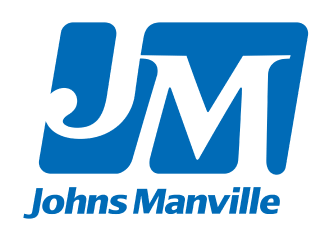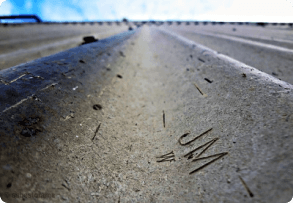Johns Manville
Johns Manville, founded in 1858, manufactured products with asbestos but hid the dangers of asbestos exposure. This led to decades of legal battles and the company establishing a $2.5 billion Johns Manville asbestos trust fund in 1988 to compensate people exposed to its asbestos products.

Johns Manville Asbestos History

The consequences of Johns Manville’s asbestos history are still felt today, more than 160 years from its start. Its manufacturing of fire-resistant roofing, insulation and other asbestos products exposed millions of workers to the dangers of asbestos.
Asbestos exposure resulted in thousands of cases of workers diagnosed with mesothelioma and other asbestos-related diseases. From the time of its founding in 1858 until it filed for bankruptcy in 1982, the company was the largest manufacturer of asbestos products in the world.
Johns Manville filed for bankruptcy because of significant liability costs. Continuous legal battles and liability claims led the company to establish the Manville Personal Injury Settlement Trust to provide compensation for those who experienced asbestos exposure through its actions.
Continued exposure and environmental concerns from past mining and manufacturing activity remain today. In June 2022, an Environmental Law & Policy Center report discussed the potential environmental threat stemming from flooding related to climate change in the Johns Manville superfund site. Flooding could spread the asbestos contamination to surrounding communities, causing widespread impact.
Company Policy: Keep Sick Asbestos Workers in the Dark
Medical director Dr. Anthony Lanza of Metropolitan Life Insurance Company, which insured Johns Manville and other asbestos companies, informed Johns Manville of asbestos-related health risks in 1933. He advised against hanging warning posters to inform workers.
Dr. Kenneth Smith informed Johns Manville leadership in 1949 that the chest X-rays of seven asbestos workers showed asbestosis. He advised company president Lewis H. Brown and other executives not to share the test results with the workers.
“We know that we are producing disease in the employees who manufacture these products, and there is no question in my mind that disease is being produced in non-JM employees who may use certain of these products.”
The company president made it a company policy to not inform workers, though Johns Manville employees began developing asbestos-related illnesses in the 1920s. Brown hired Smith as the company’s medical director.
Despite knowledge of confidential, company-sponsored reports of asbestosis in 20% of workers, Metropolitan Life discouraged government inspections of a Manville plant. Johns Manville also prohibited Dr. Leroy Gardner of New York’s Saranac Laboratories from sharing the results of his studies on asbestos. Before his death in 1946, Gardner objected to these cover ups.
Development of Johns Manville Asbestos Trust Fund
Johns Manville’s long history of legal battles over asbestos exposure directly led to the formation of the Johns Manville trust fund to settle future asbestos claims. The Manville Personal Injury Settlement Trust received official approval in 1988 with a starting balance of $2.5 billion.
The first case where Johns Manville faced liability for its actions in exposing workers to asbestos was in 1973, with Clarence Borel v. Fibreboard Paper Products Company. The success of this suit was the beginning of a stream of lawsuits injured workers filed against Johns Manville.
$600,132,570
The total assets in the Manville Personal Injury Settlement Trust at the end of 2023 as reported on February 28, 2024
Johns Manville filed for Chapter 11 bankruptcy in 1982. It emerged from bankruptcy in 1988 and established the trust. The company originally estimated it would only have up to 100,000 claimants but quickly received hundreds of thousands of claims. These numbers drained the trust, pushing Johns Manville to provide a further $520 million and restructure the claims process.
Johns Manville Trust Claim Payments
In the early days of the trust, Johns Manville paid out each claim in full on a first-come, first-served basis. However, the number of claims quickly depleted the fund, forcing the trustees to revise the payout structure and limit paid claims to a percentage.
This adjustment ensures all claimants receive a share of the compensation. The trust revises its payment percentages regularly. It currently pays at 5.1% of the claim’s original value. At the close of 2023, the trust fund held more than $600 million. An asbestos lawyer can help claimants get compensation from the Johns Manville trust fund.
- Maximum payouts are between $600 and $350,000.
- Some exceptions, called extraordinary claims, can increase claim amounts. This is typically because of high medical costs.
- Not all claims qualify for the maximum payout value.
To meet eligibility requirements to receive compensation, individuals must have a diagnosis of an asbestos-related disease and prove that Johns Manville is responsible for the asbestos exposure that caused the illness. Heirs may also make a claim. All claimants must provide documentation as evidence. Once the trust determines if a claimant meets the qualifications, it makes a payout offer based on the disease and severity.
Anyone can dispute the offer they receive or request an individual claim calculation if their illness is outside the accepted eight conditions. In these cases, the trust evaluates the claim based on the nature of the disease, tort laws in the claimant’s jurisdiction and the value of similar claims within the same jurisdiction.
Most claims get paid out within a few months, but those that require individual review can take longer. Claimants who are dying or experiencing severe financial hardship may qualify for priority processing.
Johns Manville Jobs at Risk of Asbestos Exposure
Many occupations, miners and factory workers in particular, were at risk of significant asbestos exposure while employed at Johns Manville. Workers often found themselves covered in the dust.
Because workers also carried asbestos dust out of the factories on their clothes, boots and gear when they went home or stopped in public places after work, their loved ones and the general public were at risk of secondary asbestos exposure. Exporting raw asbestos across the country and abroad spread the possibility of exposure to additional populations.
- Asbestos abatement workers
- Bakers
- Boiler workers
- Brick masons
- Carpenters
- Construction workers
- Drywall installers and tapers
- Electricians
- Factory workers
- Firefighters
- Furnace workers
- HVAC installers and repairers
- Industrial plant workers
- Insulation installers
- Military veterans
- Millwrights
- Miners
- Painters
- Pipefitters
- Roofers
- Shipyard workers
- Steel foundry workers
- Textile workers
- U.S. Navy veterans
Despite its legacy of hiding the consequences of asbestos exposure, Johns Manville has attempted to recover its image and remains in business to this day. It currently manufactures asbestos-free construction materials under the ownership of Berkshire Hathaway Inc. The company now uses fiberglass and polyurethane. It has also won awards for its formaldehyde-free insulation.

Get help paying for treatment and other expenses by accessing trust funds, grants and other options.
Access Funds NowJohns Manville Asbestos-Containing Products
Johns Manville manufactured asbestos products for construction, including insulation, wallboard and floor tiles, which put many employees at risk of developing asbestos-related diseases. The company produced a variety of asbestos products under many brand names.
Johns Manville’s Asbestos Brands and Products
- 352 Insulating Cement
- 7M-13 Raw Asbestos Fibers
- Asbestoguard Adhesives
- Asbestotle Flashing
- Colorbestos Siding Sheets
- Corrugated Asbestos Transite Sheets
- Fibrocel Insulation
- Flexstone Asbestos Roofs
- Glasal Flexboard
- Insulkote Weatherproofing
- J-M Asbestos Flexboard
- J-M Asbestos Movable Walls
- J-M Asbestos Wall Board
- J-M Aviation Products
- J-M Building Papers and Felts
- J-M Built Up Roofs
- J-M Encased Insulating Board
- J-M Insulating Cement
- J-M Marinite Fireproof Sheet
- J-M Transite
- Johns Manville Caulking Putty
- Johns Manville Colorbestos Shingles
- Johns Manville Rigid Asbestos Shingles
- Permastone Asbestos-Cement Flexboard
- Salem Asbestos Roof Shingles
- Stonehenge Architectural Panels
- Terraflex Plastic Asbestos Floor Tile
- Thermobestos Block Insulation
- Thermobestos Cement
- Transitop Asbestos Panels
- Vitribestos Sheet
- Vulcabestos Insulation
The founder himself, Henry Ward Johns, died of “dust phthisis pneumonitis,” a disease believed to be asbestosis. Individuals who have symptoms of an asbestos-related disease should speak with an asbestos lawyer to receive advice and guidance on how to document their exposure and proceed with filing a trust fund claim.
Notable Johns Manville Asbestos Lawsuits and Settlements
The company received its first official complaint in 1929 and settled for $30,000. In 2014, a New Jersey judge awarded $90.5 million to 11 families of Johns Manville employees for pain and suffering after losing loved ones to asbestos cancer.
DeRocco v. Forty-Eight Insulations Inc. included testimony from former Johns Manville medical director Smith. In his January 18, 1976, deposition, Smith testified that he and company executives knew about the dangers of asbestos, knew that their actions caused employees to develop disease and were sure others who used the manufactured products were also at risk of becoming ill.
Smith’s 24-year career at Johns Manville gave him a unique perspective and deep knowledge of asbestos risks. However, he and the company suppressed the information and kept workers and consumers in the dark.
Other cases, including Borel v. Fibreboard Paper Products, Cavett v. Johns Manville Sales Corporation and Consolidated Steel Shipyard lawsuits, helped establish precedents for plaintiffs. These and other significant losses also directly led to the formation of the Manville Personal Injury Settlement Trust.
Borel v. Fibreboard Paper Products
In 1973, Johns Manville was among 11 asbestos insulation manufacturers named in a lawsuit Clarence Borel filed after he became too sick to continue working. He cited negligence, claiming the manufacturers failed in their duty to warn workers of the dangers of asbestos, which led to his asbestosis and mesothelioma.
The jury found all defendants liable in the total amount of $79,436. However, four had already settled out of court for $20,902. Damages against the remaining seven defendants were set at $58,534. This case was one of the first successful outcomes for the plaintiff.
Cavett v. Johns Manville Sales Corporation
James Cavett was frequently exposed to asbestos from pipe insulation throughout his 40 years of work as a boilermaker. Cavett reported the insulation came from Johns Manville. He testified that the exposure was so bad that workers looked like “someone dumped a barrel of flour on you” from the accumulation of dust.
Expert testimony confirmed that asbestos exposure caused Cavett’s lung cancer and asbestosis. Cavett died before the court reached a verdict, but his wife was eventually awarded $800,000 in compensatory damages and $1.5 million for punitive damages.
Consolidated Steel Shipyard Lawsuits
Employees who worked at Consolidated Steel Shipyard during World War II filed asbestos lawsuits against Johns Manville. They claimed the manufacturer exposed workers to asbestos via the insulation it supplied to the shipyard.
Thousands of workers exposed to asbestos from this insulation throughout 1944 and 1945 later received diagnoses of asbestosis, mesothelioma and other asbestos-related diseases. Johns Manville claimed not to know the health risks of asbestos exposure at the time, but internal company documentation proved these claims false.
Consolidated Steel Shipyard employees or their surviving family members who believe their diseases stems from exposure to asbestos through Johns Manville products can speak with an asbestos lawyer to determine if they are eligible to file an asbestos trust fund claim. Licensed attorneys have access to databases that contain information to help claimants prove their cases.
Recommended Reading


